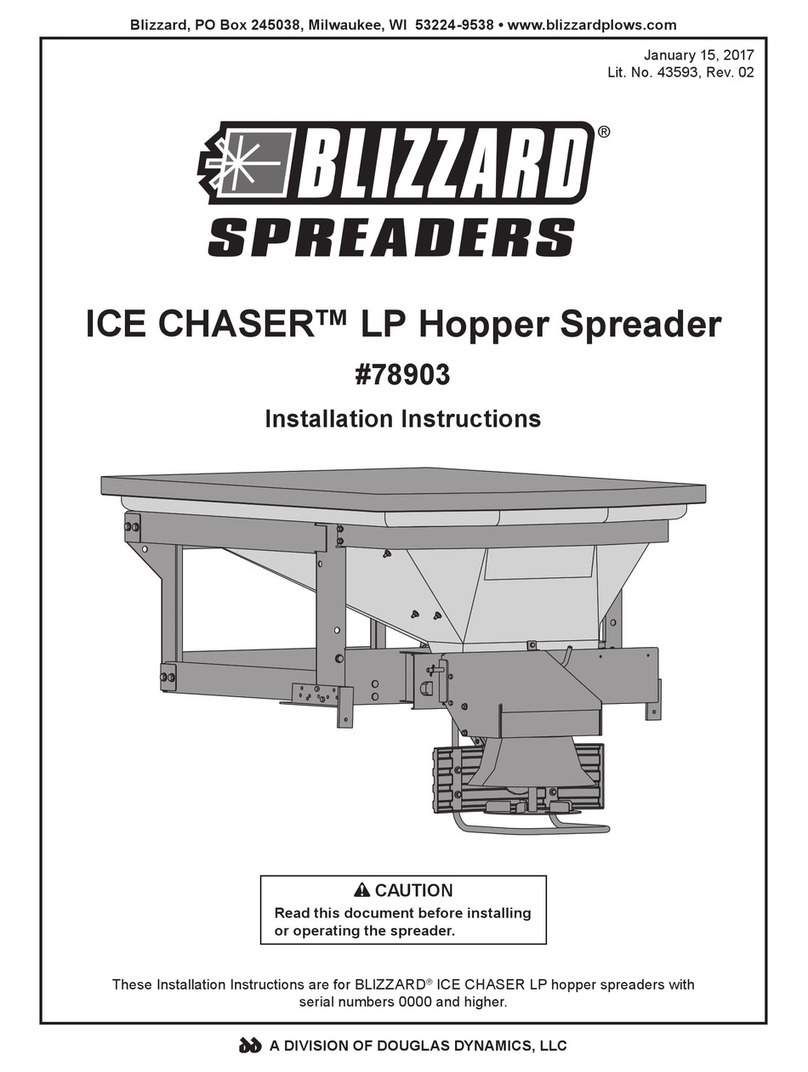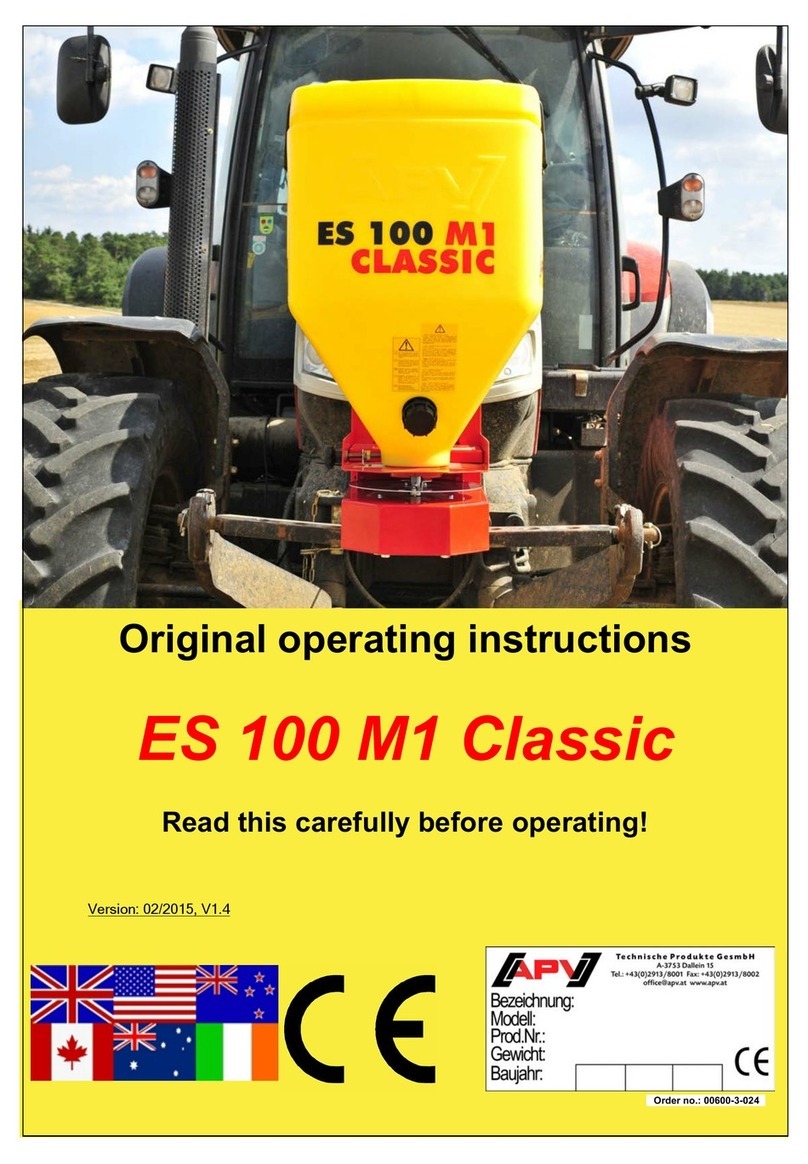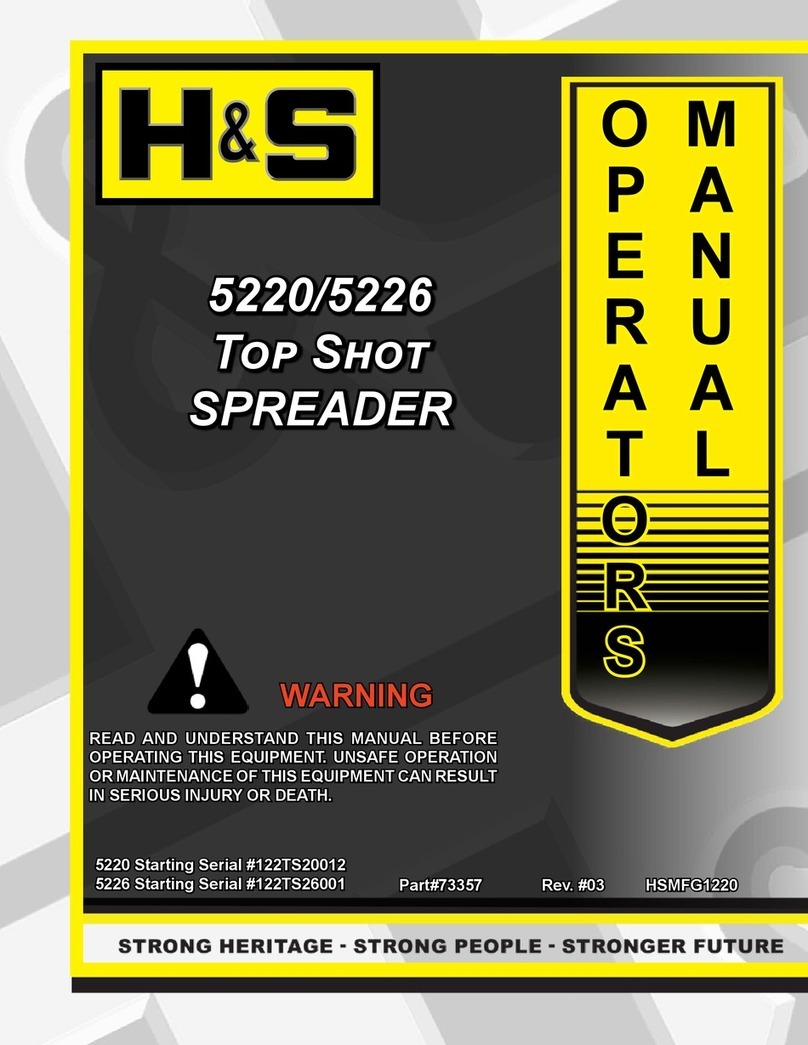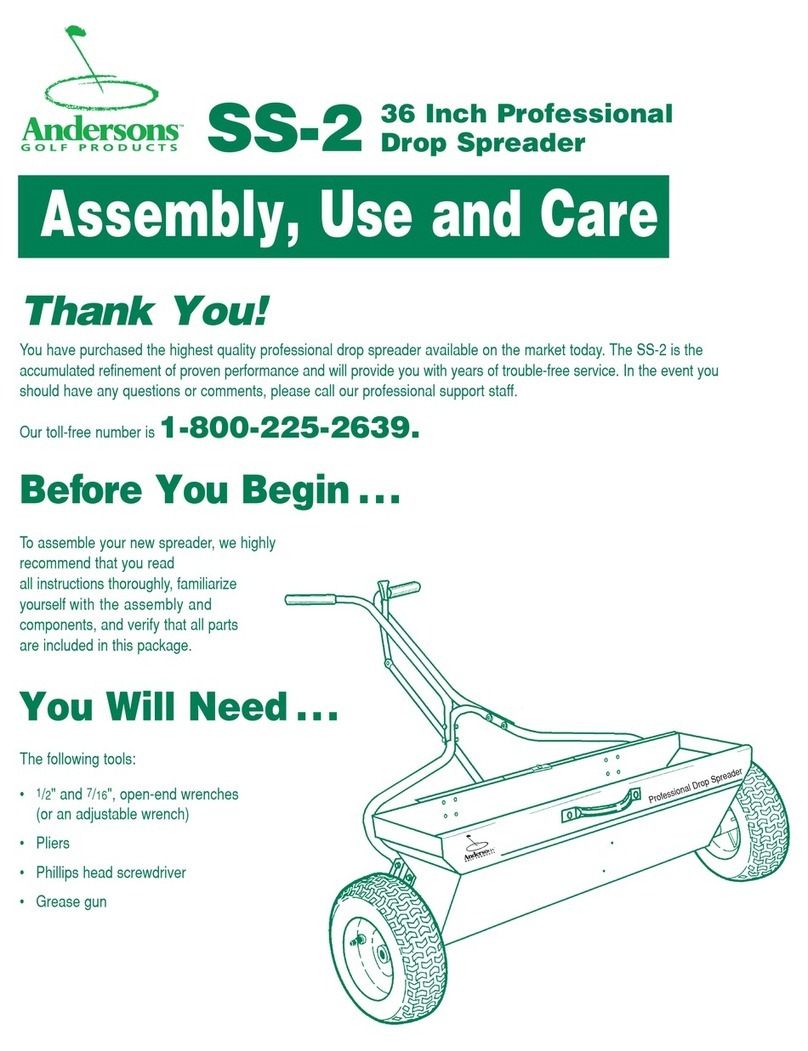
Lit. No. 43991, Rev. 01 7 November 1, 2012
NOTE: Lubricate grease fittings after each use.
Use a good quality multipurpose grease.
CAUTION
Disconnect electric and/or hydraulic power
and tag out if required before servicing or
performing maintenance.
SAFETY INFORMATION
SAFETY DEFINITIONS
NOTE: Indicates a situation or action that can lead
to damage to your spreader and vehicle or other
property. Other useful information can also be
described.
SAFETY PRECAUTIONS
Park the vehicle on a level surface, place shift lever in
PARK or NEUTRAL and set the parking brake. Turn
OFF the engine and remove keys.
WARNING
Indicates a potentially hazardous situation
that, if not avoided, could result in death or
serious personal injury.
CAUTION
Indicates a potentially hazardous situation
that, if not avoided, may result in minor to
moderate injury. It may also be used to alert
against unsafe practices.
WARNING
• Driver to keep bystanders minimum of
25 feet away from operating spreader.
• Before working with the spreader, secure all
loose-fitting clothing and unrestrained hair.
• Before operating the spreader, verify all
safety guards are in place.
• Before servicing the spreader, wait for
conveyor or spinner to stop, then lock out
power.
• Do not climb into or ride on spreader.
CAUTION
If rear directional, CHMSL light or brake
stoplights are obstructed by the spreader,
the lights shall be relocated, or auxiliary
directional or brake stoplights shall be
installed.
CAUTION
• Do not operate a spreader in need of
maintenance.
• Before operating the spreader, reassemble
any parts or hardware removed for cleaning
or adjusting.
• Before operating the spreader, remove
materials such as cleaning rags, brushes
and hand tools from the spreader.
• While operating the spreader, use auxiliary
warning lights, except when prohibited by law.
• Tighten all fasteners according to the
Torque Chart. Refer to Torque Chart for the
recommended torque values.
WARNING
Do not install the control for this product in
the deployment path of an air bag. Refer to
vehicle manufacturer's manual for air bag
deployment area(s).
CAUTION
During the hopper installation we recommend
the addition of an OSHA compliant Backup
Alarm. This alarm is required for OSHA
governed employers.
CAUTION
DO NOT leave unused material in
hopper. Material can freeze or solidify,
causing unit to not work properly.
Empty and clean after each use.
WARNING
Overloading could result in an
accident or damage. Do not exceed
GVWR or GAWR ratings as found
on the driver-side vehicle door
cornerpost. See Loading section to determine
maximum volumes of spreading material.





























